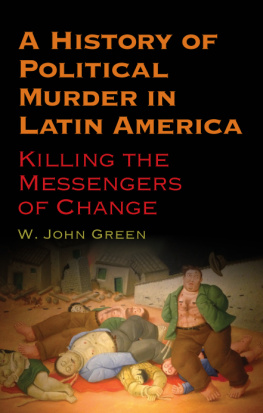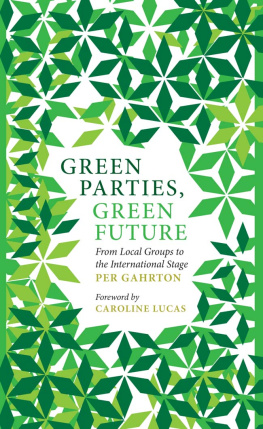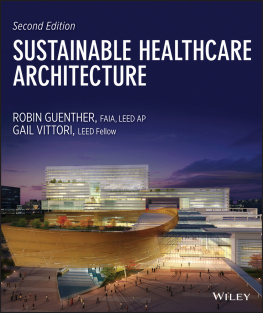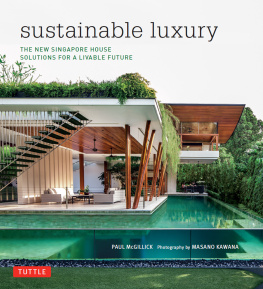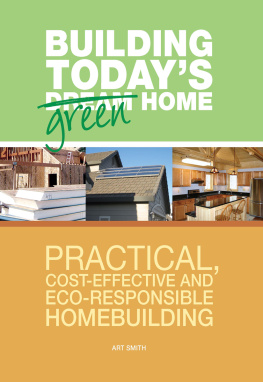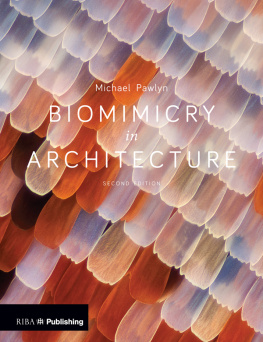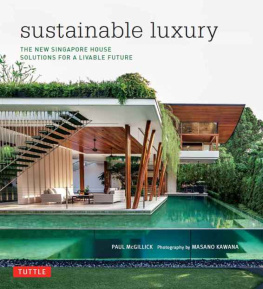
Published by
Princeton Architectural Press
37 East Seventh Street
New York, New York 10003
Visit our website at www.papress.com
2015 Princeton Architectural Press
All rights reserved
No part of this book may be used or reproduced in any manner without written permission from the publisher, except in the context of reviews.
Every reasonable attempt has been made to identify owners of copyright.
Errors or omissions will be corrected in subsequent editions.
Editor: Meredith Baber
Designers: Mia Johnson and Paul Wagner
Special thanks to: Sara Bader, Nicola Bednarek Brower, Janet Behning, Erin Cain, Megan Carey, Carina Cha, Andrea Chlad, Tom Cho, Barbara Darko, Benjamin English, Russell Fernandez, Jan Cigliano Hartman, Jan Haux, Diane Levinson, Jennifer Lippert, Emily Malinowski, Katharine Myers, Jaime Nelson, Rob Shaeffer, Sara Stemen, Marielle Suba, Kaymar Thomas, Joseph Weston, and Janet Wong of Princeton Architectural Press Kevin C. Lippert, publisher
Library of Congress Cataloging-in-Publication Data
Designed for the future : 80 practical ideas for a sustainable world / [edited by] Jared Green.
pages cm
ISBN 978-1-61689-300-2 (paperback)
ISBN 978-1-61689-423-8 (epub, mobi)
1. Sustainable design. 2. Sustainable architecture. I. Green, Jared, 1975 editor.
NK1520.D4665 2014
745.40112DC23
2014034253
CONTENTS
SUZANNE PRESTON BLIER
MAKANI THEMBA
RICK COOK
MARC KUSHNER
MARIA BELLALTA
JASON SCHUPBACH
JEMMA GREEN
PAUL FARMER
BLAINE BROWNELL
THOMAS WOLTZ
LEO A. DALY III
MARIA AIOLOVA
TERESA CRDOVA
JOHN CARY
CHRISTIAN GABRIEL
NAOMI SACHS
ELIZABETH MOSSOP
KRISTEN RICHARDS
KIRSTY KELLY
THOMAS BALSLEY
JEFF STEIN
HENK OVINK
BJARKE INGELS
HELLE LIS SHOLT
MARK A. FOCHT
JIA YOU
AZIZA CHAOUNI
BARRY BERGDOLL
ALAN M. BERGER
HUGH LIVINGSTON
MARC ARMENGAUD
MARCUS VEERMAN
LISA RICE
KONGJIAN YU
NICOLAUS BUCHOUD
INGA SAFFRON
DIANA BALMORI
WES MICHAELS
JEFF SHUMAKER
JOHN PETERSON
LENI SCHWENDINGER
TATIANA BILBAO
TIMOTHY BEATLEY
MIA LEHRER
J. MEEJIN YOON
MIKYOUNG KIM
KELLER EASTERLING
ANJALI MAHENDRA
NATHALIE JOLIVERT
BERT GREGORY
NINA-MARIE LISTER
DAVID GARCIA
EVA FRANCH I GILABERT
ANA LUCIA GONZLEZ IBEZ
PETER HARNIK
JONSARA RUTH
JOHN KING
DAMON RICH
JESS ZIMBABWE
JANET ECHELMAN
KIM YAO
ANDRES LEPIK
F. KAID BENFIELD
SARAH MINEKO ICHIOKA
MARION WEISS
JACK SULLIVAN
SONJA HINRICHSEN
KRISTINA HILL
TRACY METZ
MARINA KHOURY
VICTOR DOVER
CHRISTOPHER HUME
ROBERT M. ROGERS
CHRISTOPH GIELEN
KATRIN KLINGENBERG
DAVID LEVEN
JANINE BENYUS
ANTHONY FLINT
LI XIAODONG
LESTER BROWN
WE CANT
GIVE UP YET.
INTRODUCTION:
WHAT GIVES YOU HOPE FOR THE FUTURE?
We cant give in to fatalism, or even pessimism, just yet. While we face incredible challengeswith climate change, biodiversity loss, and rising economic inequality at the top of the listthere are glimpses of a more positive, sustainable future here today. In this book, youll find buildings, landscapes, plans, and works of artcontemporary and historic, but all realthat point the way forward.
I asked each contributor to this book the same question: What gives you hope that a sustainable future is possible? What shows the way forward? If possible, please talk about a project. And please dont talk about anything that youve been involved in.
Contributors were selected in a somewhat random fashion. I knew some people and had heard of others, while still others were recommended to me by someone I interviewed. There are architects, landscape architects, urban planners, academics, nonprofit leaders, policymakers, and artists, and some people who cross multiple categories or are beyond these. The contributors come from all over the world, but most are here in the United States. This book represents the collective wisdom of a hive mind, a meeting of so many disciplines. All are deeply committed to creating a more positive future.
Nearly everyone had an answer to the question. Out of more than eighty people I spoke to, only two said, I dont have much hope for the future. The rest seemed stirred by the challenge. I saw a few peoples eyes light up, intrigued by my challenge. Some had answers at the tips of their tongues, as if they had been just been thinking about this. Others asked for time to think, checking their assumptions and beliefs, searching for the right example. While I prompted sometimes, I didnt tell people what others were talking about, so no one was influenced by anyone else.
Almost all contributors were interviewed in person or over the phone. My goal was to keep the tone light and conversational. This is because I fear design speak. This language, like any other inside jargon, is alienating, elitist, and completely inaccessible to the public. This book is, I hope, part of the antidote to that, too, as it shows a whole range of designers and other professionals who communicate beautifully, in easy to understand terms, with passion. They really connect. So it turns out that my fear was largely unfounded; all the contributors totally got it. That gives me hope for the future because without the ability to communicate with everyone, we have no chance.
Even though all the answers are unique, the ideas and projects share common goals. They fall into loose groups. One group shows that our best hope is in the most cutting-edge technologies: progress toward sustainability means throwing out the old and coming up with new, revolutionary approaches that can undo our broken systems. In contrast, another group shows that whats oldand what has survived and adapted itself to change over many decadesis whats sustainable. The idea is that we dont make them like we used to.
And then other answers tell the story of the social, or community, side of sustainability, expressing the idea that new technologies are all well and good, but if a community doesnt feel a sense of ownership over a project and cant maintain it far into the future, then what good is it? Another side of this is that a sustainable project is one that reinvests in its surrounding community. These projects actively bolster a communitys ability to sustain itself.
One set of projects perhaps speak most powerfully to me: these projects teach usthrough innovative design and natural beautythat we are all part of the Earth. They harness nature or mimic its forms. In doing so, they reconnect us to the land, water, air, quietly letting us know that our ultimate sustainability, our survival, is dependent on a much more complex system. And so many fascinating ideas fall into many of these groups, accomplishing so much at once. Together, they form a much-needed conversation about how to reach a sustainable future.
Some takeaways that leaped out at me (as you read, you may see others):
- We can end our dependence on fossil fuels by shifting to renewable energy. Energy from the sun provides more than we will ever need.
- The world is becoming increasingly urban, and thats not a bad thing. Dense, walkable communities are the most energy-efficient and low-carbon environments we have. But to live in dense communities, people need beautiful streets, parks, waterfronts, and so forth.
- Communities know best what they need and what they can handle. If communities feel empowered, they can solve many of their own problems and plot out their own paths to future sustainability.
Next page




